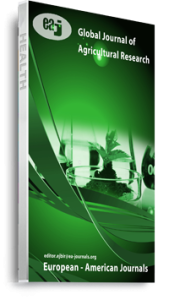The need to increasing rice productivity, value addition and acceptability through the rice value chain are some of the objectives of Federal Government of Nigeria in recent time. Rice is a major staple food in Nigeria. Rice production is however low which make the country to be a net importer of rice in Africa. This study was carried out to assess factors affecting rice (Oryza spp.) value chain in Ogun and Niger States, Nigeria. Multistage sampling techniques were used in the selection of 320 respondents for this study. Data collected were analyzed with chi square. Results of this research showed that more than forty percent of the respondents were between 30 – 40 years of age, predominantly male (80.3%), married (83.1%), had relatively large household size (6 people) and formal education (80.6%). Average income generated was estimated as ₦551,250/ha. They were member of Cooperative societies (66.6%), FADAMA (23.4%) and RIFAN (10%). More respondents (60%) carried out soil test and used tractor for land clearing in Niger State than in Ogun State (11.9%). Rice seeds were mostly planted on the field nursery (90%) rather than tray nursery (10%) using broadcasting method (84.4%). Hired and family labour (58.2%) was used for rice value chain in the two sampled states. Also, most operations in the rice processing were carried out manually (100%) due to non-availability of basic rice processing facilities. Marketing of rice was usually done at local markets (98.3%) at interval of 5-day marketing (72.2%) and mudu/congo (69.1%) was the item used for measurement in the market. Moreover, the returns of value addition were higher at marketing stage (₦750/kg in Ogun State and ₦550/kg in Niger State) than production stage (₦350/kg in Ogun State and ₦280/kg in Niger State). Birds’ disturbance (96.6%), high cost of processing equipment (92.5%), inadequate finance (83.1%) and lack of rural infrastructure (82.8%) were the major constraints to rice value chain in the sampled states. Chi- square analysis shows that there is significant relationship between socio-economic characteristics of the respondents and value addition at p < 0.05 level of significance. Similarly, significant relationship existed between threshing (χ2 = 8.35, df = 1, p = 0.00) and rice value addition at p < 0.05 level of significance. The study therefore recommends that rice farmers should embark on value addition to enhance their income from rice production.
Keywords: Assessment, Factors, Niger, Ogun, Rice, Value Chain

